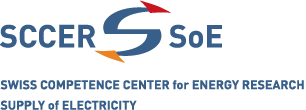In November 2013, the four year project IMAGE (Integrated Methods for Advanced Geothermal Exploration) has been launched, harnessing research power of key research institutes in Europe and industrial players to develop novel exploration techniques for geothermal power.
The objective is to develop new methods to scrutinize and appraise geothermal systems in such a way that exploration wells can be sited with greater accuracy than before, thereby maximizing the success rate and reducing the cost of drilling associated with geothermal projects. In addition, such precision wells would reduce any potential environmental impact.
New research methods will be tested in well-known geothermal systems, both in continental sedimentary systems in Europe and in high-temperature systems related to volcanism where one might expect supercritical fluids, as in magmatic areas, such as in Iceland and Italy.
The IMAGE project will develop a reliable science based exploration and assessment method to “IMAGE” geothermal reservoirs using an interdisciplinary approach based on three general pillars:
1) Understanding the processes and properties that control the spatial distribution of critical exploration parameters at European to local scales. The focus will be on the prediction of temperatures, in-situ stresses, fracture permeability and hazards which can be deduced from field analogues, public datasets, predictive models and remote constraints. It provides rock property catalogues for 2. and 3.
2) Radically improving well established exploration techniques for imaging, detection and testing of novel geological, geophysical and geochemical methods to provide reliable information on critical subsurface exploration parameters. Methods include: a. Geophysical techniques such as ambient seismic noise correlation and magnetotellurics with improved noise filtering, b. Fibre-optic down-hole logging tools to assess subsurface structure, temperature and physical rock properties, c. The development of new tracers and geothermometers.
3) Demonstration of the added value of an integrated and multidisciplinary approach for site characterization and well-siting, based on conceptual advances, improved models/parameters and exploration techniques developed in 1. and 2. Further, it provides recommendations for a standardized European protocol for resource assessment and supporting models.
The IMAGE consortium comprises eleven leading European geothermal research institutes and eight geothermal industry partners, who will perform testing and validation of the new methods at existing geothermal sites owned by the industry partners, both in high temperature magmatic, including supercritical, and in basement/deep sedimentary systems. Application of the methods as part of exploration in newly developed fields will provide direct transfer from the research to the demonstration stage The 19 participants are from the Netherlands, Germany, Iceland, Italy, France, Switzerland, Norway, the Czech Republic and Spain. The European Union provides € 10 million to the project. |


